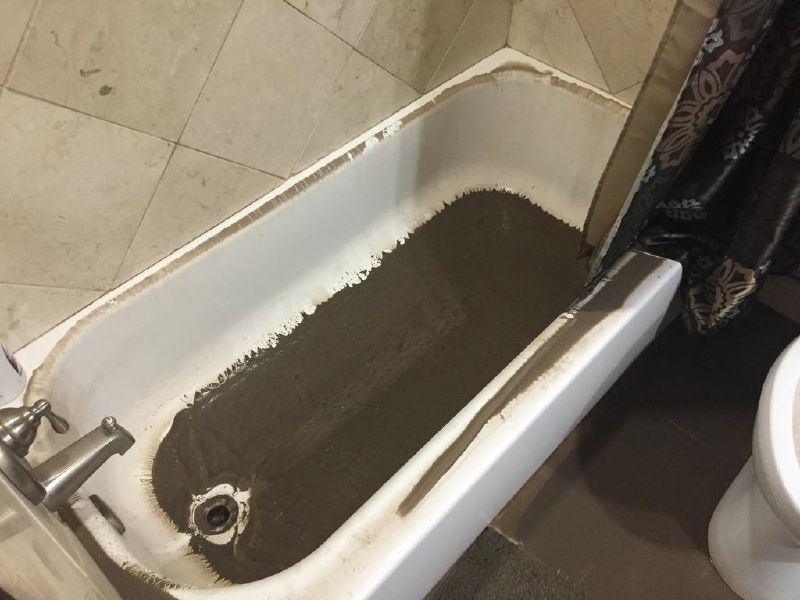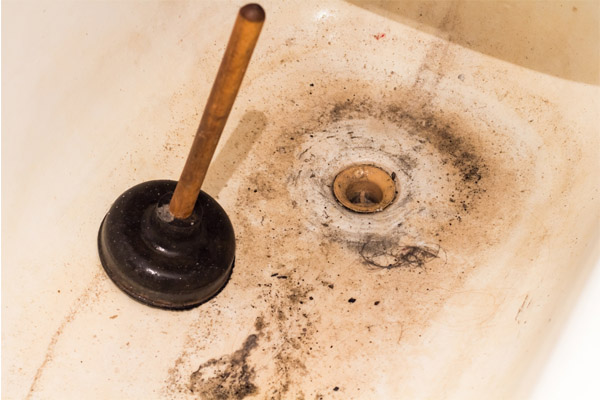Best Reasons Behind Waste Backflow in the Bathtub
Best Reasons Behind Waste Backflow in the Bathtub
Blog Article
Almost everyone will have his or her own conception on the subject of Why is There Sewage Coming Up Through the Bathtub.

Sewer back-up in the tub can be a stressful and unhygienic issue for any homeowner. Not only is it troublesome, yet it likewise positions serious wellness risks and shows underlying concerns with the plumbing system. Recognizing why sewage is coming up through the bath tub is important for taking ideal action to attend to the trouble successfully.
Intro to the Problem
Usual Reasons for Sewage Backup
Blockages in the Drain Line
Among one of the most typical causes of sewer back-up is an obstruction in the sewer line. This can occur as a result of the buildup of particles, grease, or foreign objects in the pipelines, avoiding proper flow and causing sewer to back up right into your tub.
Tree Origin Breach
Tree roots looking for dampness and nutrients can infiltrate drain lines with little splits or joints. In time, these origins can expand and expand, creating significant damages to the pipes and causing sewage backup concerns.
Recognizing the Problem
When sewage draws back up right into the bathtub, it's a clear indicator of an issue with the water drainage system. The wastewater that must be flowing away from your home is instead finding its back into your home, which can result in substantial damages and health hazards.
Prospective Reasons
A number of aspects can contribute to sewage backup in the tub. From obstructions in the sewer line to issues with the plumbing facilities, determining the source is necessary for finding a remedy.
Aging Facilities
Older homes might have dated plumbing systems that are a lot more prone to deterioration, fractures, and deterioration. As pipelines age, they end up being much more vulnerable to leakages and obstructions, enhancing the likelihood of sewer backup events.
Heavy Rainfall or Flooding
Throughout durations of heavy rainfall or flooding, the sewer system may end up being overwhelmed with excess water, creating back-ups and overflows. This can cause sewer supporting into tubs and other components inside the home.
Indicators of Sewer Back-up
Foul Odors
Unpleasant odors originating from drains pipes or components, particularly in the shower room, might suggest sewage back-up issues. These odors are commonly strong and consistent, signaling a problem that requires prompt interest.
Slow Draining Fixtures
Bathtubs, sinks, and bathrooms that drain slowly or not in all could be experiencing sewer backup. If multiple components are influenced at the same time, it's likely that the issue originates from an usual factor, such as the major sewage system line.
Gurgling Noises
Unusual gurgling or gurgling noises coming from drains when water is running elsewhere in your home are a measure of air trapped in the plumbing system. This air buildup can result from sewage back-up and ought to be investigated immediately.
Health Risks Connected With Sewer Back-up
Contamination of Water
Sewage back-up can pollute the water supply in your house, positioning a significant health and wellness risk to you and your family members. Direct exposure to polluted water can lead to intestinal issues, skin infections, and other ailments.
Mold Development
Dampness from sewer backup can develop ideal problems for mold growth in your house. Mold and mildew spores can exacerbate respiratory troubles and cause allergic reactions in sensitive individuals, making prompt cleanup necessary.
Spread of Illness
Sewage has dangerous microorganisms, viruses, and parasites that can trigger a range of illness, consisting of liver disease, cholera, and gastroenteritis. Entering contact with sewage or infected surfaces puts you in danger of infection.
Tidying up After Sewer Back-up
Sanitation Procedures
Completely decontaminate and sanitize impacted areas after sewer backup to get rid of unsafe germs and protect against mold and mildew growth. Use ideal cleaning items and safety equipment to ensure safe and efficient cleanup.
Reconstruction of Impacted Locations
Repair any kind of damage to flooring, wall surfaces, or components caused by sewage backup. Depending on the level of the damages, you may require to change carpets, drywall, or various other materials to recover your home to its pre-loss condition.
Immediate Actions to Take
Switching Off Water Supply
In case of sewage backup, it's vital to turn off the water to avoid more contamination and damages. Situate the major water shutoff valve in your house and shut it off up until the concern can be solved.
Getting In Touch With an Expert Plumber
Handling sewer back-up is not a DIY job. Get in touch with a licensed plumber with experience in managing sewage-related issues to assess the situation and carry out essential repairs or cleanings.
Staying Clear Of Contact with Polluted Water
Up until the sewage back-up is solved, avoid contact with contaminated water to stop the spread of germs and microorganisms. Put on protective gear if you should be in the damaged area and wash your hands completely later.
Safety nets
Normal Maintenance of Sewer Lines
Schedule regular evaluations and maintenance of your sewer lines to identify and attend to potential issues before they rise right into significant troubles. This can consist of cleaning out debris, inspecting for tree origin invasion, and repairing any damaged pipelines.
Mounting Backwater Valves
Take into consideration setting up backwater shutoffs in your plumbing system to stop sewage from receding into your home during durations of heavy rainfall or flooding. These valves instantly close when water draws back up, shielding your home from contamination.
Appropriate Disposal of Family Waste
Stay clear of flushing anything besides toilet paper and human waste down the commode to stop blockages and clogs in the sewer line. Dispose of grease, oil, and various other home chemicals effectively to lessen the threat of plumbing problems.
Why Is Water Backing Up in My Bathtub When I Flush My Toilet?
What to do about a sewer line clog
First, don’t bother with plunging. No amount of plunging will dislodge the clog in a sewer line. The clog is too far away. Plungers are for clogs in the toilet itself, not the sewer line. Plus, the most likely causes of a sewer clog are:
Tree roots Flushed toys or feminine products Grease buildup Those items don’t move easily. And in the case of tree roots, the roots need to be cut out of the pipe and the pipe will need to be repaired.
You’ll need a closet auger. A closet auger is a type of plumber’s snake with a protective cover to keep from scratching the delicate porcelain toilet. If the clog is further down, you may need to remove the toilet or use one of your cleanouts to get to the clog.
We also recommend doing a video inspection of the drain to ensure that the cause of the clog has been completely removed. Otherwise, you could have the same problem again in a few days or weeks.
https://mspplumbingheatingair.com/blog/why-is-water-backing-up-in-my-bathtub-when-i-flush-my-toilet

We had been made aware of that write-up on Water Coming up Bathtub Drain from a buddy on a different web blog. Liked our piece of writing? Please quickly share it. Help other people check it out. I love reading our article about What to Do if Sewage Starts Coming Up Through Your Bathtub.
Schedule Today!
Report this page